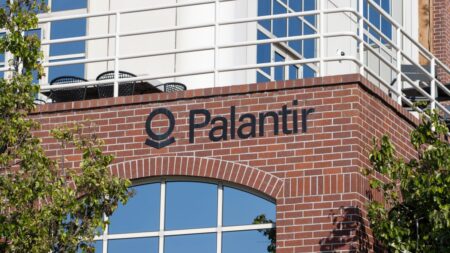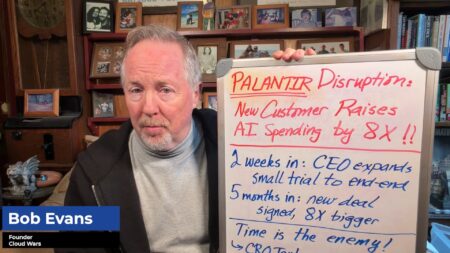This post considers the impact of RPA (Robotic Process Automation) in the world of education–posing questions and perspective from a former educator on the role it can play. This is a “point of view” (POV) piece that will be the first in a series of “Industry Cloud” articles, videos and podcasts that look at how technologies enabled by vertical clouds can empower specific industries to do new and innovative things.
The Background
The education industry consists of many different types of organizations and institutions that offer various types of on-campus and online options for learning. For context, these organizations may be public (government-run), for-profit, or not-for-profit. The schools, colleges, universities, and private institutions provide K-12, and higher education, while some will get very specific through universities with a discipline focus like medical, law, and business schools. Vocational schools are a particular type of education based on apprenticeship and hands-on training for many age groups to learn a trade. The education industry also includes specialized services like tutoring, special or alternative education, content suppliers for students as well as professional development for administrators and teachers.
So what is RPA: “Robotic process automation is nothing but instructing a machine to execute mundane, repetitive manual tasks. If there is a logical step to performing a task, a bot will be able to replicate it.” –Vishnu KC, senior software analyst lead at ClaySys Technologies.
What Teaching Tasks Could be Replaced by RPA
Teachers and administrators still spend long hours doing repetitive, manual tasks. These tasks include managing student enrollment, tracking student attendance and progress. And of course, sending notifications about everything from school closures to a student’s low attendance or grades. From what I’ve seen, teachers will always need more time for mentoring and counseling their students, as well as providing individualized learning opportunities.
Student admission and enrollment are data-intensive processes that benefit from online validation and verification. The massive amount of paperwork must be managed so that all the information is available when needed. For example, RPA can verify that the necessary information is included, and notify the appropriate people if anything is missing.
The rules for an RPA bot can be specified so that multiple outcomes can be achieved. For example, if a student assignment is late by one day, the student can be notified. If the assignment is overdue by 3 weeks, the bot can notify both teacher and the student – and maybe the parents!
Scheduling meetings and sending out reminders is another area that can benefit from RPA. Reminders can be sent automatically, and rescheduling notifications can be sent if necessary. Meetings can be requested according to predefined rules, with appropriate attendees defined including teachers, administrators, students, and parents.
Another repetitive task is monitoring attendance – for both teachers and students. Teachers can log their time on different tasks and gain insight into where time is being spent, long-term. Student attendance can be tracked and notifications sent if attendance falls below a certain level.
The automation of students’ progress reports is another area that can save teachers’ time. If the students’ scores are stored online, progress reports can be generated automatically and sent to students, parents, and teachers.
The effects of RPA on the education sector include many advantages. Long-term, expenses can be reduced if repetitive, high-volume tasks can be performed at a faster rate. Also, fewer errors will result from machine verification and validation. This provides an additional savings in time and expenses because fewer errors occur, resulting in fewer staff interventions needed. Along with the reduction in errors comes an increase in compliance. Because the automation proceeds by well-understood rules, it is easy to view and verify compliance without ambiguity. As teachers and educators spend less of their time on repetitive, monotonous tasks, they have more time to provide their time and attention where their experience indicates it is needed most.
RPA’s Adoption and Barriers in Education
In my own personal experience as well as anecdotally in my reading, I saw that Adoption of RPA in the education industry lags behind other industries. Recently, Forbes saw that institutions that already had some online automation moved ahead during the pandemic – while other industries saw slower progress as they struggled with a pivot to mostly remote, online work. Interestingly, the lagging-behind of RPA adoption is supported by the absence of mention in the following articles:
- Education was left off this list of major industries adopting RPA in 2020.
- RPA does not make this list of top education trends in 2021.
- On this list of emerging technology and research-led innovation trends for 2021 – RPA is absent again.
On the other hand, there are some results from the adoption of RPA in the education industry that are promising. A case study of an Australian university reported savings of 1,330 hours of manual effort per year. Automations in the university back-office included use cases in financial reporting, human resources, payroll, accounts payable, and accounts receivable. Other automation were partly student-facing and included tagging records in the student portal for increasingly targeted communications from student serves and the ability to review students’ coursework completed with their graduation requirements. Automations that were completely student-facing and unique to the education industry included bots to process a 250% increase in applications for admissions, and automated booking of rooms for student meetings and events.
Another institute of higher learning automated 22 processes and as a result saved 10,000 hours of manual labor per year. Shiv Chandra, Robotic Process Automation Manager at the University of Melbourne stated, “By bringing in bots to take on the human-intensive and repetitive work, we have been able to create efficiencies and empower existing staff members to repurpose their roles-actually getting people to do what they’re most passionate about and qualified to do.”
In summary, we’ve seen that RPA can provide extensive benefits in the education industry, but there is plenty of room for additional adoption. The education industry can automate tasks as in other industries. These include well-known tasks in accounts payable, accounts receivable, human resources, and financial reporting. Tasks specific to the education industry include student-specific tasks like admissions, enrollment, course and exam scheduling, tracking attendance and academic progress, and scheduling use of facilities. Additional candidates for automation are tasks that involve repetitive actions and well-defined rules, including administration of grants and financial aid, processing in support of research, and scheduling student services.
Curious about RPA and how to choose what is right for your business?
Register for free to join us for an RPA Expo Digital Event on May 20, 2021 starting at 11 AM Eastern. This three-hour event will feature short-form, to-the-point discussions to set the standard in delivering an accelerated master class on the application of RPA to drive business, process, and customer value.
Related Content:
Robotic Process Automation (RPA) 101







